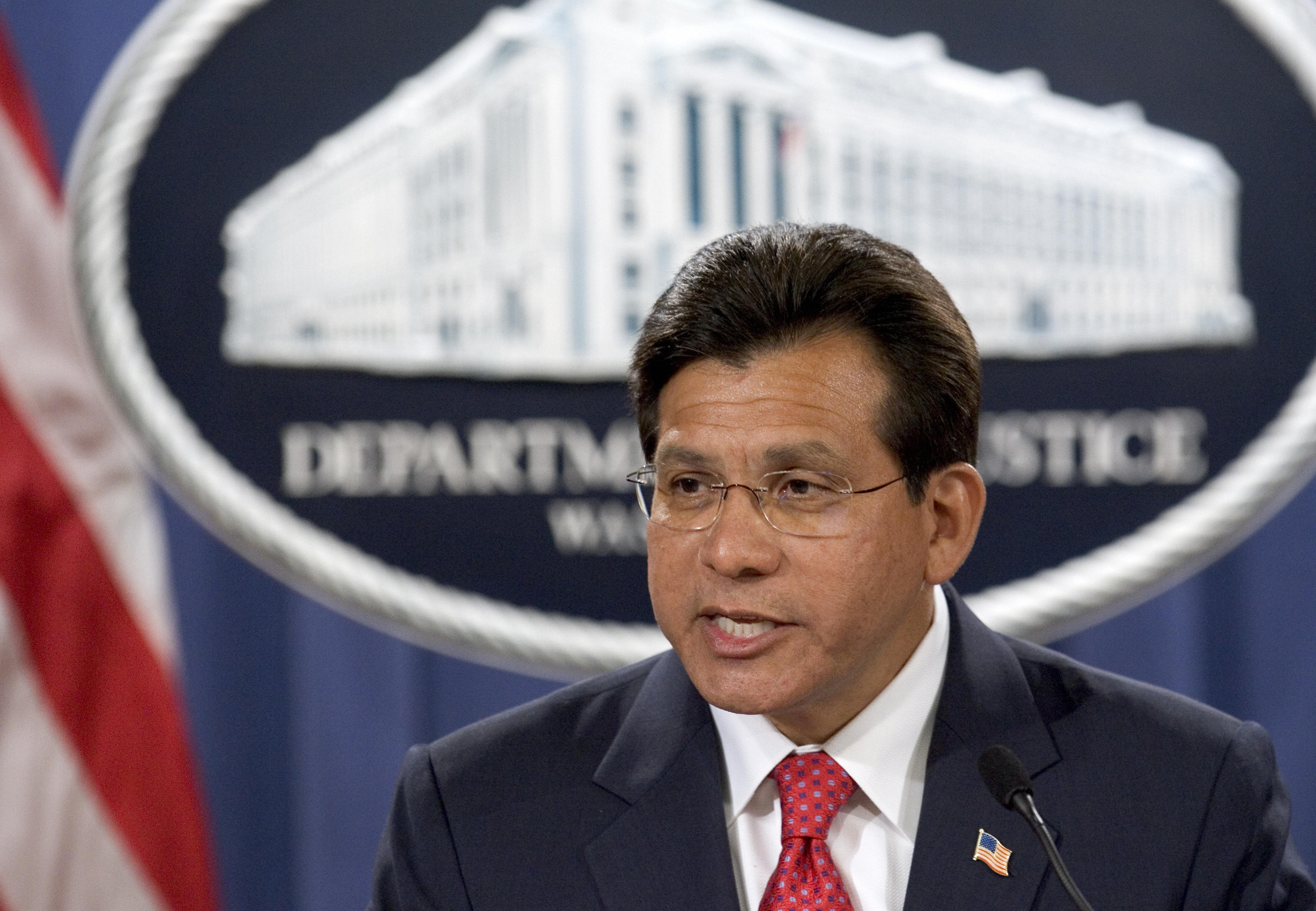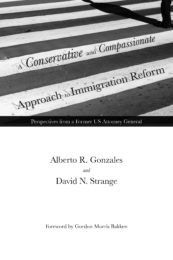Always in low relief among the big personalities in the George W. Bush administration, making news only when compelled to answer for some unsavory task completed with canine fidelity to the president who 10 years earlier had bestowed upon him the political appointment that would make him the first Hispanic attorney general of the United States, Alberto Gonzales faded into obscurity when he left Washington.
Bush called him “Fredo,” perhaps because the name sounded Mexican, perhaps because he reminded Bush of the weakest of the three Corleone brothers in The Godfather, Fredo.
It was Bush who turned an apolitical transactional lawyer into a public official presumed to be on his way to the United States Supreme Court. Gonzales served as legal counsel to the governor, Texas secretary of state, and associate justice of the Texas Supreme Court, appointed by Bush as he was running for president. His devotion to the man who made his public career was his tragic flaw.
Alberto Gonzales and David N. Strange provide a plan to create a low-wage workforce that won’t threaten the GOP’s congressional hegemony.
As legal counsel to a pro-death penalty client, Gonzales processed 57 final-day execution summaries for a governor who presided over the execution of 150 men and two women. To expedite the process, Gonzales elided essential information—“ineffective counsel, conflict of interest, mitigating evidence, even actual evidence of innocence”—Alan Berlow wrote in The Atlantic.
In 2004, White House Legal Counsel Gonzales raced to the hospital bed of the gravely ill and heavily sedated Attorney General John Ashcroft in a failed attempt to persuade him to approve an illegal warrantless wiretapping program.
In May 2007, Attorney General Gonzales was confronted by incredulous members of the Senate Judiciary Committee regarding his role in the political firing of U.S. attorneys. More than 50 times, Gonzales told senators that he had no recollection of events in which he had been involved.
In July 2007, he was again before the Judiciary Committee, trying to square his account of his visit to Ashcroft’s hospital room with distinctly different versions of others who were involved.
Two months later, he resigned.
Atonement for such conduct would require decades of renunciation, asceticism, and perhaps mortification of the flesh. Instead, Gonzales has co-written a book about immigration reform. With “compassionate” and “conservative” in the title, Gonzales is trading on the Bush brand. There is a predicate for compassion early in the book: “Some supporters of immigration reform believe the status quo is preferable to new legislation … However, there is nothing compassionate about forcing people to live in the shadows or to work under conditions that no human should have to endure.”
But the solution Gonzales and coauthor David N. Strange propose is more about regulating a labor market than integrating undocumented residents into society: creation of a “nationals” status for immigrants who would be authorized to work, pay taxes, and qualify for some social services, but never vote.
“We believe that the vast majority of undocumented immigrants came to America to find work, not to become citizens,” the authors write. Workers, not citizens. The exception is undocumented high school graduates who would be provided a path to citizenship by enlisting in the military.
Gonzales and Strange are straightforward about Republicans’ fear of hordes of naturalized Hispanics voting for Democrats. And it is this path to citizenship that divides Republicans and Democrats in Congress. Not even the 10-year path to citizenship included in the immigration bill that the Senate passed almost two years ago is acceptable to Republicans in the House.
The book is a useful primer on immigration reform. Demographics are detailed, the economic burden of providing meager public services to undocumented residents is calculated, the legislation that foundered in the House is described, punitive state laws from Arizona to Alabama are defined as what they are, the cost and challenges of educating undocumented children are explored. The book is packed with detailed and accessible information.
But although the authors track immigration reform legislation through the Senate and into the House, where Speaker John Boehner has yet to persuade his Tea Party caucus to pass the Senate bill (or any bill), the failure to reform the nation’s immigration laws is attributed to Barack Obama.
George W. Bush, “owing to his popularity with the Latino electorate … appeared poised and equipped to initiate immigration reform”—until the September 11 attacks. He was also, the authors write, struggling with a sluggish economy.
Obama “has failed to deliver on his promise of immigration reform … We believe the failure of the President to do his job does not excuse members of Congress from doing their jobs.”
Except that Congress hasn’t. The House, in fact, even voted to end deferred deportation or removal for “dreamers,” which would strip 700,000 young people of the temporary status the administration provided them in 2012. The only immigration reform since the Reagan presidency was ordered by a Democratic president who used his executive authority to lead more than 1 million undocumented residents “out of the shadows.” Only to be threatened with lawsuit by the Republican speaker and sued by 24 Republican governors and attorneys general.
Gonzales and Strange provide these Republicans a plan to create a low-wage workforce that won’t pose a threat to the party’s congressional hegemony. Had the authors been honest, A Conservative and Compassionate Approach to Immigration Reform, dense with useful information, might have been a fine book.
They weren’t and it’s not.
Lou Dubose is the editor of The Washington Spectator.







